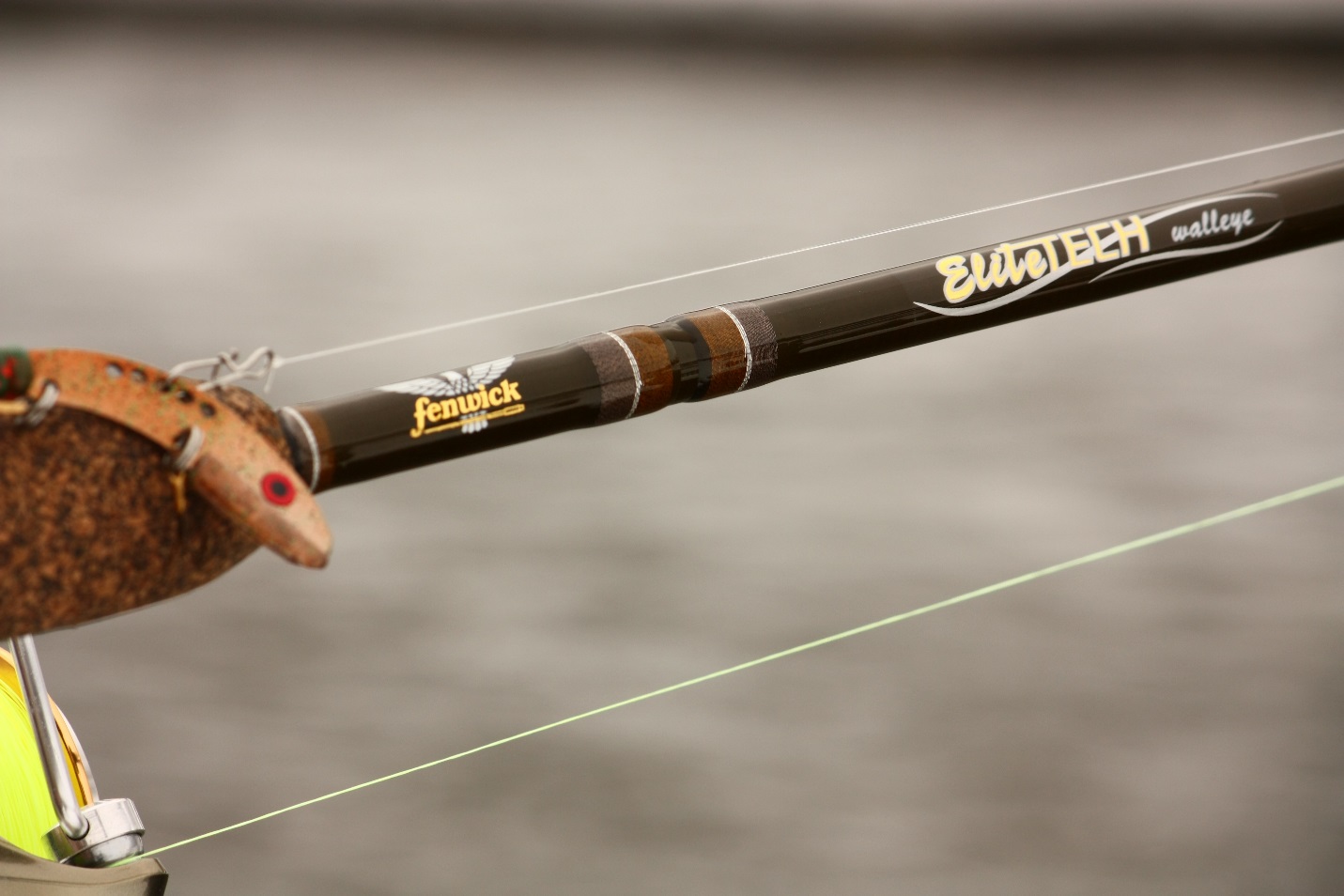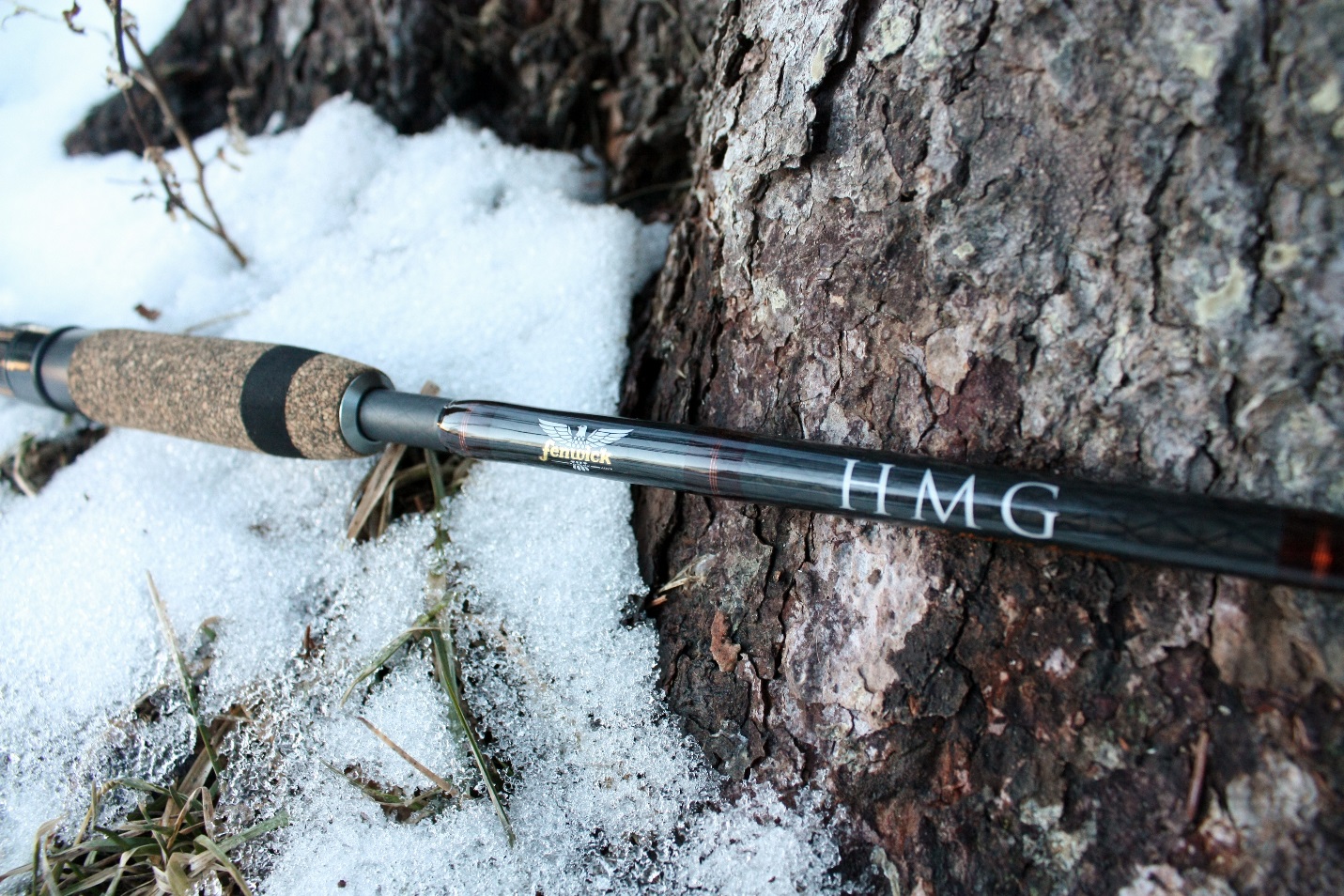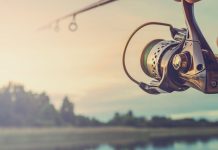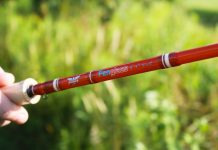As a tournament walleye angler, one of the most frequently asked questions I get is about which rods to use in certain situations. It is somewhat surprising to me how many people use the wrong stuff. Many times the rods are too heavy, or they are built with the wrong components for the technique they are being used for. I am a firm believer that having the right equipment, especially rods, is an easy way to make just about anybody a better angler. With that, let’s take a look at what makes for the right rod in a few popular walleye tactics.
Terms to Know:
Blank: The actual “rod” portion of the fishing rod. Generally made from graphite, carbon fiber, fiberglass, or a composite blend of these materials.
Guides: The loops that the line passes through down the rod blank. Generally made from metal or with a metal frame and ceramic inserts.
Reel Seat: The part of the rod handle that secures the reel to the rod.
Action: The term “action” refers to the rod’s flexibility. For example, a fast or extra fast action means the rod bends close to the tip. A moderate action rod bends more in the middle of the blank, and a slow action bends all the way down near the handle.
Power: “Power” refers to the stiffness of the rod. Generally it follows a scale of Heavy, Medium, and Light power, with incremental increases (ultra-light, medium light, medium heavy, extra heavy, e.)
Jigging Rods
Jigging is a staple technique in walleye fishing, and one of the easiest ways to make just about any angler a better jig fisherman is by using the right stuff. Things you want in a quality jigging rod include a very sensitive blank, comfortable and sensitive handle material, an overall lightweight design, and a compact package. Here are the stats for my perfect jigging rod:
- Between 5’9” and 6’ long
- Medium light to medium power
- Fast to extra-fast action
- Dense handle material
- Graphite or carbon fiber blank (Never Fiberglass!)
You may be thinking that a 5 foot, 9 inch rod seems pretty short, and it is. However with jigging, longer rods can actually be a disadvantage. The goal with a jigging setup is to have the most sensitive setup possible. By having a shorter rod you are able to shorten the overall distance between the lure/bait and your hand, in turn allowing you to feel any strikes more quickly which lets you react faster. That is not to say a long rod won’t work, but the short sticks are most widely accepted and put into use for this presentation. Another bonus to a shorter rod is they are lighter. Having a light jigging setup is important as it reduces fatigue and helps transmit feel better.
Going along with the sensitivity and “quickness” factor, having a fast to extra-fast action is key to having lightning quick hook sets. When a walleye grabs a jig/bait in a river, they suck it in very quickly and will spit it back out within seconds if they don’t like how it feels or tastes. This greatly limits the amount of time you have to set the hook before you lose the fish, so having a fast action allows you to bury the hook more quickly.
Probably the most important factor to choosing a good jigging rod is the rod material. Absolutely under no circumstances should you choose a rod with a fiberglass blank. Fiberglass is slow and doesn’t transfer feel well making it a horrible choice for jigging. Look for rods with a high-modulus graphite or carbon fiber blank. These materials are much more sensitive and react much more quickly than fiberglass, making them perfect for this application.

It can be expensive to find the right rod with all of these features, however you don’t have to break the bank to equip yourself with a quality rod. The Fenwick Elite Tech Walleye series has 12 different models to choose from, all of which retail for under $150. The price may seem steep, but making an investment in a quality jigging rod with pay for itself in no time. The model I use is the 5’9” extra-fast action with medium power. This rod fits the criteria perfectly and performs up to par with rods three times the price. They also have a hidden reel seat design which is super comfortable. You can learn more about these rods by watching this video:
Rigging Rods
Live bait rigging is a great way to catch walleye all year, and as before with jigging, having the right rods can make a big difference. With rigging, sensitivity is still very important, however there are a few other factors that a good rigging rod needs. For this, we want a longer rod to provide some leverage for big sweeping hook sets, a lighter tip action, and a lighter rod power. Here are my specs:
- Between 7’ to 7’6” long
- Light, medium-light, to medium power
- Moderate to fast action (moderate for medium power, fast for light power)
- Graphite or carbon fiber blank
With these rods we want something that provides a good amount of feel, while having a soft enough tip that when a fish picks up the bait, they can hold it for a while and eat it without feeling too much pressure on the line from the rod. The other reason we want a softer tip section is to detect bites. Sometimes walleye will hit the bait and more or less just sit there with it in their mouth, making it difficult at times to determine when a fish has hit the bait. Having this light tip almost acts like a bobber and allows you to see strikes and sort of a bobbing motion, indicating that a fish is on the line.
Now because the rod is lighter in power and action we need some extra leverage to ensure a solid hook set which is why a rod between 7’ and 7’6” is perfect. It is long enough to provide the leverage, yet short enough to relay feel in a reasonable amount of time.

My absolute favorite rigging rod is the Fenwick HMG spinning rod in the 7 foot, medium power, fast action model. This series has a graphite blank with carbon fiber cross-weaves making them super sensitive and very durable. For those who prefer using a casting rod for rigging, there is a 7 foot, medium power, fast action model of HMG that works great. Best of all, the HMG series retails for just under $100, making these rods pretty affordable.
Trolling Rods
I know with the last two techniques I was pretty picky, but with trolling rods I promise I won’t be! Essentially, a good trolling rod is a shock absorber first and a tool to fight fish second. When trolling, and especially with inline planer boards, you need a rod that can take the constant pulsing of the lines from the waves, the shock of a fish hitting the bait, and the stresses of getting snagged without breaking. You need a long blank that is very, very durable, and comfortable yet durable handles. Here are my specs for the perfect trolling rods:
- 7’10” up to 10’ (8’6” is my overall perfect general purpose trolling rod length)
- Medium to medium heavy power
- Moderate action
- Graphite or fiberglass blanks (Yes, fiberglass is fine for trolling as sensitivity is not as important!)
- Long comfortable durable cork or EVA foam handle
- Rock solid reel seats
The nice thing about most trolling rods is that they are pretty inexpensive. In my opinion, if you are paying more than $80 for a trolling rod, you are wasting your money. Here you don’t need something sensitive with a well-tuned tip action. You just need a rod that gives you some distance from the boat, leverage to fight fish, has durable handles to take the abuse of being thrown in and ripped out of rod holders repeatedly, and a blank that can take constant surging and bending.

I just got my hands on a new trolling rod last summer that meets all the criteria perfectly and is actually pretty sensitive, and probably one of the best rod actions I’ve ever felt in a trolling rod. New from Fenwick is the Eagle Series of trolling rods. They have a graphite blank, a very durable burled cork handle, solid reels seats that won’t loosen with use, and an amazing action that takes board surges like a boss and is absolutely perfect for fighting big fish. On top of it, these rods are telescopic, making them super easy to store in just about any rod locker. The rods I use are the Eagle 8’6” medium trolling rods. Like I said before, I absolutely cannot get over the action of these rods, so if you troll a lot like I do, you really need to check these things out! The best part is that they retail for just under $70 a piece, so outfitting yourself for trolling is decently affordable.
Hopefully with these tips you can build your walleye rod arsenal to its fullest potential, and put more fish in the boat this season. As I’ve said before, I believe that quality equipment can make a big difference in success, however, you don’t have to break the bank to get the performance you need. With open water only a month away, now is the perfect time to get rigged up! So get off your computer, head to your local tackle retailer and get to it! Go! Now!




Noah,
I would be interested in your thoughts on a good rod for casting. I spend a great deal of my time casting minnow baits, like a xrap, for shallow water walleyes. I typically use a 7 ‘ medium to medium light rod with a fast action.
I would appreciate your thoughts.
Best regards
Hi Scott, thanks for your question! We’d suggest reaching out directly to Noah on his Fishidy account, we’re sure he’d be willing to share some pointers. Here’s a link to his profile: http://www.fishidy.com/user/4ea04bda4192160740ce6942 (you will need to sign into your own Fishidy account to view this page) Thanks for stopping by the Fishidy blog!
[…] on what equipment to be using in conjunction with your planer boards! In a previous article about proper rod selection I talked about the perfect trolling rod. To sum it up, you want a rod that is around 8’6”, […]
Hey Scott! The rod you are using is the same thing I generally use for casting minnow/stick baits in the shallows. Having the longer rod definitely gives you more leverage for casting lighter lures like original floating rapalas and the medium power with a fast action is perfect for quick hook sets. I’m assuming it is a spinning rod? If not, you may consider switching to a spinning outfit as they will also increase your casting distance. With that, keep doing what you are doing and good luck!
Rods as per various underwater targets vary in patterns. Wrong gear is truly an incomplete fishing game. Points displayed herein are pretty much perfect; ensuring what to choose and why; appreciate!
Great, this problem always make me confused. Finally I can find the way to choose the most suitable fishing rod thanks to this article. Thank you for sharing experience!
How does the action of the Fenwick Silverhawk compare to the eagle series? I just bought a pair of 8’6 medium heavy silverhawk rods for planer board fishing and I hope they aren’t too stiff. Do you think I should exchange them for the eagle series salmon and steelhead rods?
Thanks
The Fenwick Silverhawks (Cabela’s exclusive model) have an action that is almost a cross between the Fenwick HMX and the Fenwick Eagle series of rods. That said they should work just fine for trolling with planer boards as long as you are using a 10-12 pound test monofilament line to provide some stretch. I used to troll boards with the Fenwick Eagle GT salmon/steelhead rods a few years ago, and although they had a slightly stiffer action they worked just fine. My advice would be to try them out and if you don’t like how they feel, swap them out.